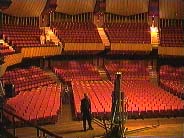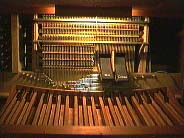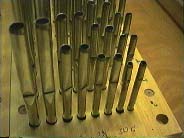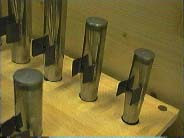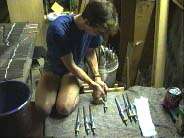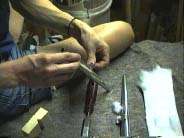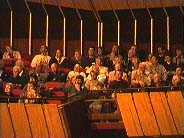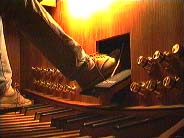March
|
A note from that time read: (The first photos of the Swell division are only just appearing because I was too much of a coward to face the climb up and the walk along the "plank" into the swell chamber before a handrail was built. I asked Domink how he coped with heights when building organs. "Not so difficult," he said. " I am a parachutist". - Jenny)
|
(Move your mouse over the pictures to read the captions - these have yet to be finished but they are coming!)
How to tune a cornet stop without going crazy
Dominik prepares the Cornet pipes, which have been assembled temporarily in the blower room.
Because the Cornet stop has five ranks of pipes, it would be impossible to tune or voice each rank while the other ranks were sounding, so Dominik has to take four of the five pipes for each note and silence them by putting cotton-wool in the mouth of each pipe. The still-speaking one is then played, and tuned. Pipe-by-pipe the cotton-wool is removed and swapped around until all pipes have been individually voiced and tuned. Here the Cornet pipes wait in line behind the Principal pipes in the Hauptwerk for tuning. |
April
Viewing of the Organ and new seats in the Town Hall auditorium during the open day in April 1997 for the new Christchurch Convention Centre. The public of Christchurch were able to see (but not hear - for that they must wait until May!) the completed organ during an open day. Short talks about the instrument were given to the visitors by organ curator, Martin Setchell. And later in private, Alois Schwingshandl, assistant to the voicer, puts the organ through its final test stages.
|
Next page - rehearsals
|




